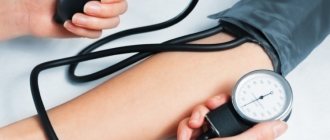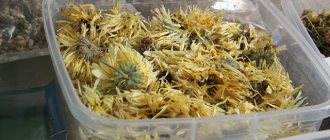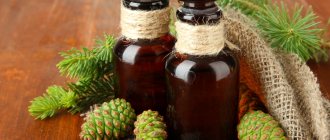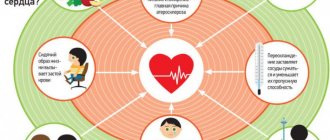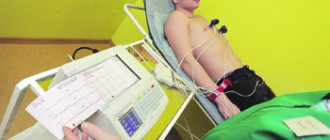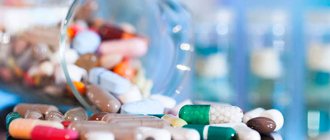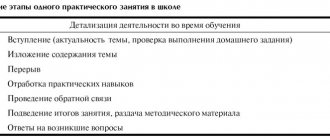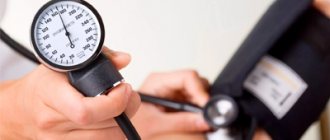Phlebologists never tire of repeating that the treatment of varicose veins must be comprehensive. This includes surgical removal of pathological veins, taking medications, influencing blood vessels with external medications, and compression therapy. In addition, it is extremely important to adjust your lifestyle. This includes making it a habit to eat healthy.
By introducing foods that have a beneficial effect on the condition of the veins into your diet, you will provide invaluable assistance to your health.
The diet should be aimed at:
- Reduced swelling
- Normalization of body weight
- Normalization of stool (since constipation also contributes to the development of varicose veins and its complications)
- Strengthening the connective tissue that makes up the vascular wall
- Blood thinning
What foods should be included in the diet
Foods rich in vitamin E. Vitamin E (tocopheryl acetate) is also called the “vitamin of youth”. It strengthens the walls of blood vessels, making them more elastic - and also participates in the formation of collagen and elastic fibers of the intercellular substance.
In addition, vitamin E ensures tissue regeneration and maintains normal levels of blood clotting - which is especially important in the context of preventing the development of thrombosis.
Vitamin E also has an anti-carcinogenic effect and helps strengthen the immune system. It also protects the cell structure from destruction by free radicals - in a word, a real little guardian of our health!
Spider veins appeared on the legs
Spider veins, or telangiectasia, are a persistent dilatation of small vessels of a non-inflammatory nature.
Not only small veins can be affected, but also arteries and capillaries. They differ in color: dilated arterioles and capillaries are red and do not stand out above the surface of the skin. Dilated veins have a bluish tint and may protrude slightly. The stars are usually localized on the inner and back of the thighs, calves and ankles (but can also be on other parts of the body, in particular on the face). Over the age of 75, about 70% of the population suffers from this disease, however, among young people under 45, about a third note the appearance of a fine network of blood vessels on the legs.
The diameter of the dilated vessels does not exceed 1 mm. The configuration of the “stars” can be very different - actually star-shaped, tree-shaped, or in the form of several parallel thin lines or spots. All these formations, regardless of form, are of a similar nature.
Spider veins do not cause discomfort: they do not cause pain or other unpleasant sensations. This explains why patients go to the doctor only when small vessels on the legs become an “aesthetic” problem: for example, before the summer season. Meanwhile, a visit to a phlebologist should not be postponed if spider veins appear on the legs.
To provide your body with vitamin E, be sure to eat:
- vegetable oils
- flaxseed (as a dietary supplement)
- milk
- cereals
- soy
- beef liver
- egg yolk
- green salad
- nuts
Foods rich in vitamin P. Vitamin P (aka rutin) is a whole group of plant bioflavonoids that are effective antioxidants and have a pronounced capillary-strengthening property.
Rutin ensures elasticity of vascular walls, helps reduce swelling and maintain normal blood pressure, and also strengthens the walls of blood vessels among themselves, preventing their destruction.
Exercises to strengthen blood vessels in the legs
Therapeutic exercises are an integral part of the prevention and treatment of vascular diseases, in particular varicose veins. Performing exercises helps strengthen the veins in the legs, helps normalize blood flow, and reduces the load on the walls of the venous vessels. There are a number of gymnastic exercises that can be performed both at home and at work. The main thing is to treat their implementation responsibly. After all, only systematic exercise will bring real benefits.
Expert opinion
If there are existing problems with venous circulation in the lower extremities, some exercises are prohibited. So, if you are at risk of blood clots, it is not recommended to do jumping or sprinting; Lunges and squats should be done carefully.
Vascular surgeon, phlebologist
Osipova Ekaterina Yakovlevna
It is necessary to devote time to improving the health of blood vessels using this method at least 2 times a day: morning and evening (10-15 minutes each). You can tone your veins at home by doing the following types of exercises:
- Exercise "Bicycle"
This exercise is one of the most popular and effective.
Technique: you need to lie on the floor, hold your arms along your body, then raise your legs 40 degrees from the floor and begin to slowly pedal an imaginary bicycle.
Exercise time (seconds): 30.
Number of approaches: 3.
- Exercise "Scissors"
This exercise is not classified as difficult, but the benefits of doing it are great. The “Scissors” exercise is aimed not only at strengthening the veins in the legs, but will also help to work out a muscle group (abs, thighs).
Technique: lie on the floor, place your arms along your body, palms down, lift your straight legs off the floor and lift one leg up and lower the other down. Alternate your leg swings.
Exercise time (seconds): 40.
Number of approaches: 2.
- Exercise "Birch"
By performing this exercise, you can strengthen the entire circulatory system as a whole, and improve oxygen access to organs, in particular to the brain. Daily practice of “Berezka” will provide a surge of vivacity and energy, relieve headaches, reduce blood pressure in the lower extremities, which will relieve the feeling of heaviness and swelling. It is advisable to perform in the morning, on an empty stomach.
Technique for performing the exercise: lying on your back, slowly raise your body to a vertical position. The emphasis is on the back of the head and shoulders. If necessary, you can hold the body with your hands.
Exercise time (seconds): 40-60.
Number of approaches: 3.
For the convenience of all exercises in a lying position, use a gymnastic mat, a tourist “foam” or a blanket.
There are a large number of different exercises to strengthen the walls of the blood vessels of the legs, which are performed both in a lying, standing, and sitting position. From all the variety, you can choose for yourself the ones that are most easily feasible and appropriate for any situation. Therefore, even at your workplace, you can spend 10 minutes doing simple gymnastics for your veins. After all, on average, a person spends 40 hours a week at work. And if it involves a long stay in a static position, then you definitely need to stretch your legs.
!
Gymnastics will help to avoid congestion in the lower extremities and pelvic organs, and most importantly, not to interrupt the performance of a health-improving set of daily exercises.
Here are some of these exercises:
- flexion and extension of toes;
- circular rotations of the feet;
- lifting the toes and heels off the floor (alternately);
- walking in place, without lifting your toes off the floor.
Complex execution time (minutes): 3-5.
Expert opinion
WHO recommends walking at least 10,000 steps daily. This helps improve blood flow in the lower extremities (especially if you spend most of the day in a sitting position), helps saturate the blood with oxygen and strengthen the walls of blood vessels. In addition, simple walking at a moderate pace prevents congestion in the pelvic area, which is especially important for women.
Vascular surgeon, phlebologist
Osipova Ekaterina Yakovlevna
This set of exercises will help not only improve the condition of the blood vessels of the lower extremities, but also prevent or alleviate the symptoms of diseases of the pelvic organs in women and the reproductive system in men. Exercises are also effective in treating hemorrhoids. It is important to consult your doctor first.
Medicines, vitamins and creams to strengthen vein walls
You can strengthen the walls of blood vessels in the legs using medications, vitamin complexes and topical agents. After all, both prevention and treatment of any disease are always more effective when taken together. This ensures maximum effect from each individual treatment.
Vitamin complexes are an additional source of components important for the human body. Therefore, before using vitamins, you must first of all pay attention to your diet. It is worth giving preference to eating the right food, and, if possible, saturating your diet:
- citrus fruits (especially grapefruit);
- fatty fish meat (salmon, trout, pink salmon, chum salmon);
- dietary rabbit and poultry meat;
- dried fruits (dried apricots, dates);
- vegetables (carrots, beets, garlic, broccoli).
But providing the body with enough vitamins and minerals through just the right diet can be difficult. Therefore, it is worth starting taking vitamins. They normalize blood circulation, reduce the permeability and fragility of capillaries, prevent the deposition of cholesterol plaques, and can also affect the preservation of the elasticity and firmness of the vein walls. "NORMAVEN®" complex of venotonic vitamins and plant extracts contains active natural ingredients that will help you cope with your tasks. It must be taken daily with meals. The duration of treatment is most often 4-6 weeks.
Medicines to increase the elasticity of blood vessels contain the following active ingredients: diosmin, hesperidin, troxerutinum, dihydroergocristine, rutoside, etc.
!
Taking medications of any medication group should be agreed with a specialist. He will select an individual drug regimen.
A cream for strengthening leg blood vessels should contain synthetic or natural ingredients that:
- will help increase the elasticity of the vascular wall;
- strengthen and normalize blood circulation in the lower extremities;
- will have a venotonic effect.
Cream for strengthening blood vessels in the legs
Similar components are synthetic substances such as troxerutin and heparin. Natural substances that have a positive effect on veins are:
- extracts: horse chestnut, ginkgo biloba, green tea, leeches, lingonberries, arnica, etc.;
- vitamins: A, C, E, etc.
NORMAVEN® foot cream meets the above requirements. It has a rich composition of 12 natural components, due to which the cream acts in 4 directions at once: venotonic, analgesic, anti-inflammatory and cosmetic. The effectiveness of the cream has been clinically proven; it is indicated even in the early stages of the development of varicose veins and is absolutely safe during pregnancy. The cream is distributed over the entire surface of the limbs with light massaging movements from bottom to top 1-2 times a day. Specialists from the pharmaceutical company VERTEX worked on the development of the product; it has the necessary documents and certificates.
To compensate for the lack of vitamin P in the body, pay attention to the following foods:
- Citrus fruits
- Tomatoes
- White cabbage
- Grape
- Dog-rose fruit
- Green tea
- Walnuts
- Seafood
- Sea kale
Foods rich in vitamin C. Vitamin C not only protects our body during cold season, but also strengthens the walls of blood vessels (connective tissue) and helps reduce swelling. In a word, it is simply irreplaceable for varicose veins - so do not under any circumstances ignore the “ascorbic acid” that is familiar to all Soviet children.
What is the prevention of varicose veins of the legs (lower limbs)
Prevention of varicose veins of the legs (lower limbs) allows you to avoid the early development of symptoms of chronic venous insufficiency and live a full life. Many people would like to avoid developing vein pathology. Despite this, few people are involved in the prevention of varicose veins. Modern statistics and observations of professionals show that even those patients who do not have a hereditary factor are susceptible to varicose veins. Therefore, it is necessary to begin the prevention of varicose veins of the lower extremities long before the first symptoms of venous insufficiency appear.
Prevention of varicose veins of the legs
It goes without saying that if chronic severity, evening swelling of the lower extremities, or visible dilation of the veins appears, it is necessary to contact a specialist in the treatment of veins, a phlebologist.
